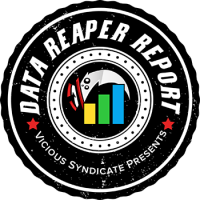
Welcome to the 52nd edition of the Data Reaper Report!
Our Data Reaper Project, including the Data Reaper Live (Beta) has 2,600 active contributors. Without them, this project would not be possible, so we’d like to thank all of our contributors for their help.
Quick Links
Class/Archetype Distribution | Class Frequency | Matchup Winrates | vS Power Rankings | Class Analysis & Decklists | Meta Breaker of the Week | How to Contribute | Credits
Number of Games
| Overall | 60,000 |
| Legend | 2,000 |
| Ranks 1-5 | 15,000 |
| Ranks 6-10 | 15,000 |
| Ranks 11-15 | 18,000 |
Class/Archetype Distribution
Class Frequency by Day
Class Frequency by Week
The first thing we will mention is the discrepancy between the ranks 5-1 meta and the legend meta. There are many differences and they mostly result from the time of the month. The 5-1 meta is actually more competitive right now, and at legend, players tend to experiment with decks more. The biggest example is the number of Rogues at legend. Crystal Rogue’s numbers are abnormally high, and it’s due to many players switching to play the deck after they finished the climb. We can also see other examples, such as Exodia Mage being much more prevalent at legend. We will mostly discuss the 5-1 meta in this article as a result, since the legend meta at the moment is not a great representative for most climbers. It’s a bit too early still and its sample size is relatively low.
While most of the classes have stabilized in their numbers, one class refuses to and that is Shaman. Token Shaman continues to increase in its popularity every week, and is only 2nd to Token Druid in its play rates at the bottleneck to legend. If you’re climbing ladder, this archetype has to be accounted for, as it is very dominant against the field. Other Shaman decks have mostly fizzled out. Jade Shaman does have a niche in tournaments against a narrow field of opponents, but performs very poorly to the diverse ladder meta. Elemental Shaman is also nearly non-existent, though its low sample does indicate it’s a playable deck, but seems to suffer from redundancy: it’s hard to justify playing it over more efficient alternatives.
Druid remains the most popular class at higher levels of play, though we do notice its numbers have declined to some degree. Token Druid is a favored choice for many players as it’s a fast deck that has favorable matchups against other fast decks, but its play rate is not indicative of its power level. While it is strong, is has not clearly been the best choice for many weeks, and with its numbers being so high, you can safely assume that it is being targeted by the meta.
While its numbers at legend are high, Rogue is actually declining at ranks 5-1. While Crystal Rogue is certainly strong, it can be difficult to find a very favorable meta for it. There are many popular decks that just straight up counter it. Miracle Rogue, however, is showing an increase in play in addition to an increase in its diversity. It seems like players are experimenting with the archetype, and it does make sense to us as it’s very flexible.
Mage is in a similar spot to where it was last week. We notice an increase in preference to play Secret Mage, which is likely the result of the very diverse meta we’re experiencing. Since Secret Mage has a very balanced matchup spread, it’s a strong all-around deck, and is good if you’re not looking to counter specific strategies. Burn Mage is still the most popular Mage archetype, while Freeze Mage maintains its decent representation which increases at higher levels of play.
Warrior remains fairly boring. Its trajectory keeps going down, though Taunt Warrior’s numbers increase at the bottleneck to legend, which is infested with the two token decks it is able to beat. Paladin, similarly to Warrior, remains very stable with all three of its archetypes boasting similar play rates.
One class, other than Shaman, that has seen an increase in play is Priest. Several individuals have had success recently with Miracle variants, both combo-centric and control-centric, which has spiked interest in the archetype. Whether that translates into an increase in its win rate remains to be seen. We’d be cautious drawing conclusions early in the month, where the meta at legend can be narrow at times and more forgiving.
Hunter remains the “F2P btw” class. Its numbers drastically decline the higher you climb, and high levels players have shown very little willingness to experiment with the class. The one-dimensional nature of Hunter is holding it back, and we’re wondering if it can ever get cards or mechanics that could help diversify its play style. It’s not a dead class, since Midrange Hunter is competitive, it’s just relatively underwhelming compared to the shiny alternatives that are available.

Note: legend win rates are still applied to the 5-1 table, which we will focus on. Notice how the meta at legend, which was infested with Rogues over the past week, affects the decks’ power levels. Any deck that beats Crystal Rogue has its win rate inflated compared to its 5-1 score, and vice versa.
While it hasn’t gained traction in the form of an increase in popularity yet, Freeze Mage is still performing very well. Players might be discouraged to play the deck because of its barrier of entry (it has a noticeably high skill cap which is visible in our metrics), but it seems to be highly rewarding to learn how to play it. Its matchups against the token decks are the primary factors that cause its win rate to be as high as they are. In addition, unlike other decks that do well against the board flooders, Freeze Mage performs well against Rogue. Its worst matchups are the Priest class in general, the Mage mirrors and Jade Druid. Although it does have these very poor matchups, its good matchups make the trade-off point in favor of playing it. Burn Mage is a “safer” deck, with a more balanced matchup spread. It doesn’t lose too hard to anything in particular and it’s very flexible in its tech choices. Secret Mage is also very strong all-around against the field, especially if you’re not running into a lot of Murloc Paladins and Pirate Warriors. Overall, it’s safe to say that Mage is the best class in the game, boasting three very strong archetypes with impressive win rates. Turns out Primordial Glyph and Arcanologist are pretty good!
Even though Token Druid is very popular, its win rate isn’t amazing. A deck that is so popular is bound to be focused down, and this is what’s been occurring with the archetype over the past week. While Token Druid can have blazing starts, mostly involving Innervate and Vicious Fledgling, it’s an honest deck that has a universal counter: AOE. Its high numbers keep some of the slower decks in the meta, which aren’t as popular, very relevant. It’s not oppressive by any means.
The board flooder that we’re slightly more worried about is Token Shaman. Worried might be too strong of a word, but it keeps climbing both in its win rate and its play rate, which means that unlike Token Druid, it is much more difficult for the meta to counter. It makes sense. Token Druid runs out of steam early and can be blown out of the game with a couple of AOE effects. Token Shaman, however, plays a much more patient game and is able to reload the board more consistently after it is cleared. Its hero power synergizes very well with its strategy and it carries a lot more value through its Jade package, its Evolve package and other cards that provide it with resources (Mana Tide Totem, Stonehill Defender). This peskiness makes Token Shaman very threatening even in later stages of the game. It only has two consistent and reliable counters: Freeze Mage and Taunt Warrior. This makes the deck scary strong and one can make a case that it is the best all-around deck out there. It’s hard to disagree.
If you’re looking to play control decks, Control Paladin is probably the best one the meta has to offer. It has a really good matchup spread, only being vulnerable to Rogue and Jade Druid. It generally does well against aggressive decks, and can trade wins with all of the dominant Mage archetypes due to its strong recovery tools, so it’s definitely a good ladder choice. Murloc Paladin remains superior to Midrange due to the importance of having a consistently strong early game against some of the more popular decks in the meta, most notably the Mage class. In the Paladin vs. Mage matchup, you either want to pressure early and take over the board, or sit back and heal their burn. Midrange Paladin did recover its score a bit from last week’s collapse, but it is still an inferior ladder deck compared to its more specialized counterparts.
The increasing number of Token Shamans is helping Taunt Warrior’s cause. The deck has peaked at the early days of the expansion and has been declining ever since, but this decline seems to have been stopped by its newfound relevance due its matchup against the rising star of the meta. Meanwhile, Pirate Warrior keeps winning even though there are plenty of decks out there that do well against it. The number of Golakka Crawlers has drastically dropped since the launch of Un’Goro and this helps the deck tremendously as long as it stays relatively under the radar. Face is still the place.
While we do note that there has been some success with the Priest class lately by certain individuals, we don’t see it translate yet to Miracle Priest’s overall performance against the field, which remains very weak. We’ll keep looking, but it seems like Priest is successful against too narrow a field of opponents, which isn’t enough to keep it relevant for ladder consistently. It’s likely going to drop in play as the month reaches its later stages and the meta at legend becomes more competitive. For now, we’ll wait and see how the class changes as more players take up and test the latest builds. Jade Shamans are in a similar spot where people are attempting to tweak successful tournament lists in order to make them work for ladder, but it’s not working out at the moment. Elemental Shaman is likely the best bet for another Shaman deck to emerge, but its numbers are very low and there appears to be a lack of faith in the archetype from the player base.
Here’s our Warlock update. Murloc Warlock is not terrible. It barely sees any play, but it might be okay. Its win rate keeps climbing at the moment (47% as of this week), and while the confidence level regarding this observation is not very high, it’s safe to say that it’s much better than the standard Zoo decks that are proven failures. We think this archetype is worth a shot. Unicorn alert. Mrgling intensifies.
Class Analysis & Decklists
Druid | Hunter | Mage | Paladin | Priest | Rogue | Shaman | Warlock | Warrior
Druid had a strong showing at the Starladder event, with many players bringing Jade Druid to fight against the primarily control Meta. To further improve their chances against control decks, some decks included tech choices, such as Acolyte of Pain, and Harrison Jones over the more defensive Gluttonous Ooze.
Token Druid lives and dies by the presence of Crystal Rogue. While it has good matchups against many other decks in the Meta, such as Murloc Paladin, Pirate Warrior and Jade Druid, it is the strongest counter to the Rogue deck. Token Druid is able to go wide and deliver fatal damage before the Rogue can complete the quest. The Rogue is also extremely vulnerable to Vicious Fledgling openers. One of the deck’s strengths lies in its ability to tech against the field. It is able to comfortably fit in Hungry Crabs, Golakka Crawlers, and interchange the Murloc Package with Bittertide Hydras, or a midrange beast package (Shellshifters, Druid of the Claws, and sometimes even Menagerie Wardens). What this means is that the player has to pay close attention to the meta, and shift the deck accordingly. Playing a bunch of crabs will not help you one bit versus Mages, and the more mid-range beast package is definitely not ideal against Rogue.
Jade Druid offers more than just the satisfaction of playing a one mane 15/15 in the late game. Jade Druid has solid matchups against Hunters, Pirate Warriors, and just a slight disadvantage versus the Token Shaman deck, but it really shines in the matchups against Burn/Freeze Mage and Taunt Warrior. Jade Druid will feel miserable to play against Rogue, Silence Priest, and Murloc Paladin, but the way to play the highly unfavored matchups is to take bigger risks. While keeping Jade Idol and Jade Spirit might feel okay, the player should aggressively mulligan to high-roll. Look for the dream openers. On the flip side, in the favorable matchups, look to mulligan a bit more safely. Double Innervate and a Jade Behemoth might be tempting against the aggressive matchups, but is likely to leave you hero powering in the following turns. In general, you’re looking for a balanced diet of ramp, Jades and card draw.
Mage continues to be one of the most popular classes in Hearthstone, and it sits second to Druid at higher levels of play. Burn Mage is the most favored Mage archetype across all ranks, while Secret Mage and Freeze Mage also maintain respectable representation.
Secret Mage has recently seen a number of experimental successes on ladder. Celticguard reached #3 legend with a slower variant of the deck. The list utilizes Archmage Antonidas as well as a single copy of Mirror Image, for added Fireball creation as well as early game Mana Wyrm protection. Alongside this, a 9 card Secret package is complemented by the God of Madness himself, Yogg-Saron, who has seen an increase in play recently across multiple classes. In China, a hybrid Secret-Burn Mage hit rank 1 legend. This version includes Alexstrasza and Pyroblast to give it an alternative win condition within the typically tempo based Secret package.
JohnnyBlack recently hit #1 legend on EU with a hybrid Burn Mage list that tries to incorporate some of the strengths Freeze Mage has over the field by adding Acolytes of Pain instead of the traditional Kabal Courier as well as Doomsayers. The Doomsayers sacrifice value in control matchups in order to improve the performance against aggressive decks. The Acolytes’ purpose is to reach your win conditions faster as well as find your built-in answers more consistently, rather than fishing answers with the Discover mechanic.
Freeze Mage continues to be a relevant consideration on ladder. The Un’Goro version lacks the reach of previous incarnations of Freeze Mage making its matchups against decks with healing considerably worse. However, its popularity unsurprisingly increases at higher ranks with the aim of targeting the prevalent Token Druid and Token Shaman. In these matchups, stall is more important than outright burn and a well-timed Doomsayer-Frost Nova can be game winning.
- Mage Class Radar
- Muzzy’s Burn Mage
- GeorgeC’s Burn Mage
- JohnnyBlack’s Hybrid Burn Mage
- Ant’s Secret Mage
- Celticguard’s Secret Mage
- Chinese Hybrid Burn/Secret Mage
- Laughing’s Freeze Mage
The Shaman class continues to receive more love on ladder. It is now the 3rd most popular class overall, with Token Shaman being one of the most popular archetypes in the game.
Token Shaman remains a very stable list of 30 cards that see almost no variation. Although some players have been teching in Lightning Storm in their decks, the general consensus is that the optimal list is still the one that runs none. Pros and regular ladder-goers continue to put up excellent results with the deck because of its ability to stop aggressive decks in their track and at the same time, outlast and then burst Control decks. Devolve has been one of the deck’s best cards. The ability to get rid of large Taunt creatures, neuter buffed creatures (murlocs and Druid tokens), or simply set up favorable trades cannot be underestimated. This week, TerrenceM hit #1 legend with the exact same list we’ve been seeing these past few weeks.
Elemental Shaman continues to see moderate levels of play on the ladder. The archetype’s success wanes and waxes with the changes in the meta. Recently, lists that incorporate a Jade package into the deck have been more popular. This week, Hotform reached Legend with an anti-Aggro take on this archetype. His list eschews some of the smaller Elementals for more board wipes, Jinyu Waterspeakers, and 2 copies of Devolve.
- Shaman Class Radar
- Standard Token Evolve Shaman
- Hotform’s Elemental Shaman
- StanCifka’s Jade Shaman
- TheViper94’s Jade Shaman
There’s been very little change when it comes to Warrior since the beginning of the expansion. It continues to be a steady presence on ladder with its two decks, which land at opposite ends of the spectrum in terms of playstyle.
Pirate Warrior is about as good as it’s always been, in and amongst the top decks of the meta but never quite hitting the top ahead of a variety of new decks which have been developed over time. The large number of defensive taunts has led to Spellbreaker being the new standard, while Captain Greenskin also continues to see play in many lists, but a 2nd Naga Corsair can definitely replace it. Overall, there are two flex spots revolving around Greenskin/2nd Naga and Spellbreaker/2nd Mortal Strike, and there isn’t a clear cut best choice for any situation.
Taunt Warrior is facing a relatively favorable meta which compensates for the inherent weaknesses that led to its win-rate dropping in recent times. Token Druid and Token Shaman are both good matchups for Taunt Warrior and are extremely prevalent on ladder, so it’s possible to string wins together by preying on those decks. Lists remain more or less the same, with minor techs such as Shield Block and Harrrison Jones being possibilities when facing specific strategies.
While remaining one of the most versatile classes in Hearthstone, the big story in Paladin this week is the utter lack of innovation. Maybe it’s because there are a number of events running, maybe it’s that the archetypes are finally solved, or even that the meta has turned hostile in enough matchups that the class is falling out of favor. For whatever reason, players have turned their attention to other classes in search of successful innovations.
Murloc Paladin is still the powerhouse it has always been against any midrange or control strategy, however it falters considerably against almost all other aggressive decks, especially those that can easily tech Hungry Crabs, such as Token Druid. If you’re looking to run Paladin on ladder, this deck will give you your fastest games, win or lose, but if you’re running into a lot of aggressive decks, consider other options.
Midrange Paladin is seeing equal representation to the more aggressive Murloc builds, and straddles the line between breakneck aggro and throttling control. Sometimes this deck gets to have its early game cake and eat its late game value too, but often it can get run over by aggressive decks that have a more consistent opening.
Control Paladin sees the lowest representation of any of the archetypes, but sees more play the higher you climb and is extremely prevalent in the tournament scene. This deck concedes early pressure in favor of winning the value game. N’Zoth, Elise, The Curator, various tech silver bullets (e.g. Harrison, The Black Knight, etc) are all toys you can play with as you put this deck together. This deck specializes at beating the aggressive decks that give faster Paladin decks problems.
- Paladin Class Radar
- Ender’s Murloc Paladin
- Standard Murloc Paladin
- Zanananan’s Midrange Paladin
- Xzirez’ Hybrid Midrange Paladin
- Underscore’s Control Paladin
- Ostkaka’s N’Zoth Control Paladin
Rogue has performed well in Starladder over the weekend with RDU playing the Giants Miracle Rogue and Zalae playing Crystal Rogue in the grand finals. Rogue excels in the slow meta which is sometimes found in tournaments; however ladder is a different scenario where aggressive decks are quite common.
The rise of Mage and Token Shaman on ladder has left Rogue in an uncomfortable position. Eater of Secrets can help in the Mage matchups, but the card is useless against the rest of the field and Rogue decks generally struggle to fit in narrow tech cards in their builds. The combination of Devolve and a wide board strategy from the Token Shaman can make life very difficult for Miracle Rogue in particular.
We have seen some innovation on the Miracle Rogue front. Rastafish reached #7 legend with a Yogg Miracle Rogue, a build more heavily focused on cheap spell damage cards, with the assistance of Evolved Kobold. We have also seen some Miracle Rogue decks drop the pirate package entirely in favor of Firefly as it synergizes well with Questing Adventurers and allows the deck to have a little bit more early board presence.
Miracle Rogue is in an interesting place, with many ways to build the deck leading to plenty of room for exploration in the coming weeks. We will have to see if any other variant can topple the Arcane Giants version as the dominant Miracle Rogue build.
As a response to the rise in popularity of Token Shaman and Druid, we have seen Crystal Rogues bringing back Backstab in place of the Tar Creepers, as it allows them to deal with some of the pesky 3 health totems and the early Vicious Fledglings, which are game winning if left unanswered.
As for other Rogue decks, Quatro peaked near #50 legend with Water Rogue. The deck was famous for its late bloom into the MSG Meta, but has not established any ladder presence since Un’Goro launched. Could it make a return?
- Rogue Class Radar
- Swash Crystal Rogue
- Tar Crystal Rogue
- Muzzy’s Giants Miracle Rogue
- Rastafish’s Yogg Miracle Rogue
- Fire Fly Miracle Rogue
- Quatro’s Water Tempo Rogue
Priest remains below average. In another meta, Priest might be above average, but currently this is the state of the class and it’s not that far away from the leading pack to be incapable of success. There are just six classes which are very strong at the moment, and it’s difficult for Priest to consistently perform well against all of them.
Priest is still competitive after all, as players continue to take different variants to high legend rank daily. While Dragon Priest has been the most consistent build of late due to its favorable matchups against swarm decks in this meta, Miracle Priest has recently shined more with Underscore taking the combo variant to top 10 legend. Asmodai and IAmTheKing took control variants inspired by Rooftrellen and MrYagut to top 10 legend as well. Statistically, this archetype has not been performing well due its struggles against a wide variety of decks, but certain builds might be capable of great runs. Time will tell regarding these latest iterations.
Dragon Priest is still probably the most consistent option as it simply has better library of matchups than the other archetypes, but it just goes to show how strong cards like Lyra and Shadow Visions are, pushing all Priest decks forward.
- Priest Class Radar
- Ostkaka’s Silence Priest
- Titan’s Silence Priest
- Meati’s Dragon Priest
- Zetalot’s Dragon Priest
- Underscore’s Miracle Combo Priest
- Asmodai’s Miracle Control Priest
- Mr.Yagut’s Miracle Control Priest
- Kibler’s Highlander Priest
Hunter play continues to drop this week, and it is becoming almost reminiscent of the Gadgetzan meta, where very few players were attempting to refine Hunter, with top players focusing instead on classes less reliant on a linear play style.
Although Hunter play still remains scarce, particularly at higher levels, Secret Hunter has grown slightly this week. Midrange Hunter is still the clearly dominant archetype for the class. The slight increase of Secret Hunter is likely a fad caused by players looking for a more interesting style of Hunter, but Midrange Hunter remains stronger against almost all decks other than Token Shaman and Token Druid.
NickChipper continued to experiment with Hunter this week, putting together a beast-centric build which features Dinomancy and Eggnappers. The inclusion of these cards, emphasizing sticky minions, makes the deck much better against slower decks such as Taunt Warriors and Jade Druids, but the tradeoff is the lack of comeback mechanics in Unleash the Hounds. Additionally, a Flare is a necessary tech card included, because with a Hunter hero power replaced by Dinomancy, it can be difficult to kill Mages who have the time to clear the board and play more Ice Blocks. Be careful with this wacky build, as it requires a very specific, slower meta for the upsides to outweigh the downsides. If you want a good all-around build, stick with the standard Midrange Hunter decks.
- Hunter Class Radar
- Freakeh’s Midrange Hunter
- Grish’s Midrange Hunter
- Kranich’s Secret Face Hunter
- NickChipper’s Dinomancy Hunter
As we get further into the month of June, Warlock appears to be settling into the nearly non-existent play rates we have seen previously throughout Journey to Un’Goro. This further exemplifies Warlock’s inability to perform until a few more tools, ideally healing or a form of damage mitigation, are added into Gul’dan’s card pool in the next expansion.
Until then, we will continue to have brave pioneers who pilot the class against all odds. Firebat’s Doom Handlock makes a second appearance this week with a revised list. This rendition aims to play more into the Ancient Watcher and Humongous Razorleaf package with some additional spells. With multiple ways to silence or taunt up your Watchers and Razorleaves, and a wide variety of board clear spells to combo with your Bloodbloom, the deck is capable of creating and breaking strong board states fairly easily. Using your two big health resets, in Jaraxxus and Alexstraza, can help offset some of the health you’ve lost due to your hero power or your opponent’s pressure, though you’re usually required to set up a board of taunt minions in order to do so safely.
As a result, Playing Jaraxxus or Alexstrasza feels somewhat underwhelming, as you’ll consistently find yourself playing the two when your opponent already has some type of board established, and would require very little burn damage from hand to hit the 15 needed to kill you. While the deck is entertaining and we admire Firebat’s continuing endeavors to make Warlock great again, the weaknesses of the Warlock class are still ever present in this deck, as with every Warlock deck these days, and it often leaves you wishing Bloodbloom cost 1 mana instead of 2 so that it could combo with the aforementioned 9 drops.
- Warlock Class Radar
- Vandoom’s Zoo Warlock
- Data Reaper Murloc Warlock
- Xixo’s Murloc Warlock
- Firebat’s Doom Handlock
Token Shaman keeps rising in its play rate as well as its win rate, and the meta is struggling to stop it. While there are a few counters to the archetype, they are relatively niche. Taunt Warrior has weaknesses in other areas that prevent it from becoming more prevalent, while there is still some reluctance to play Freeze Mage even though we maintain it’s very strong against the field and is the Kryptonite for Shaman.
For now, the best all-around, safest deck is Token Shaman, which seems to be superior to Token Druid due to its resilience and ability to last much longer throughout the course of a game. We don’t expect the archetype to grow too much more than it already has, but if a successful ladder climb is your goal, you will face this deck many, many times along the way. Are you prepared?
Our Data Reaper Project, including the Data Reaper Live (Beta) has 2,600 active contributors. Without them, this project would not be possible, so we’d like to thank all of our contributors for their help.
Preparing our weekly article requires a significant amount of time and effort from many individuals. We would like to wholeheartedly thank our current Patreons, whose generous donations help us fund computing and server costs.
Tier 3+ Patrons
Special thanks to Leo G, Chungfr, Kognar, Zach D, Aaron B, Andrew C, Jiliac, Jed M, Caleb G, Drew M, Alan J, and Jeff B for supporting us for the month of June.
A HUGE thank you to our Tier 5 Patron(s): ByteCookie and Haya A!
Contributors
Here are all the people that participated in bringing you this edition of the vS Data Reaper Report:


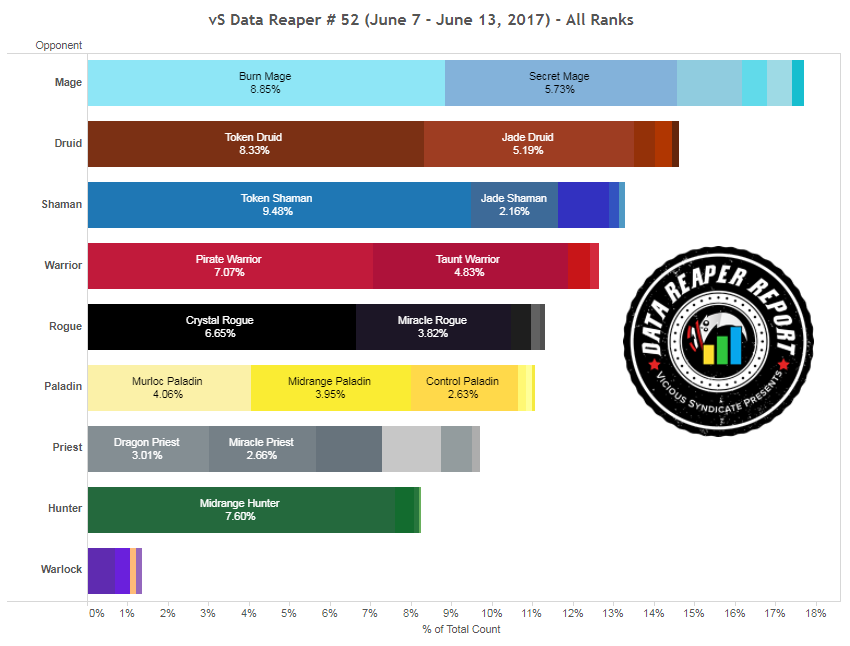

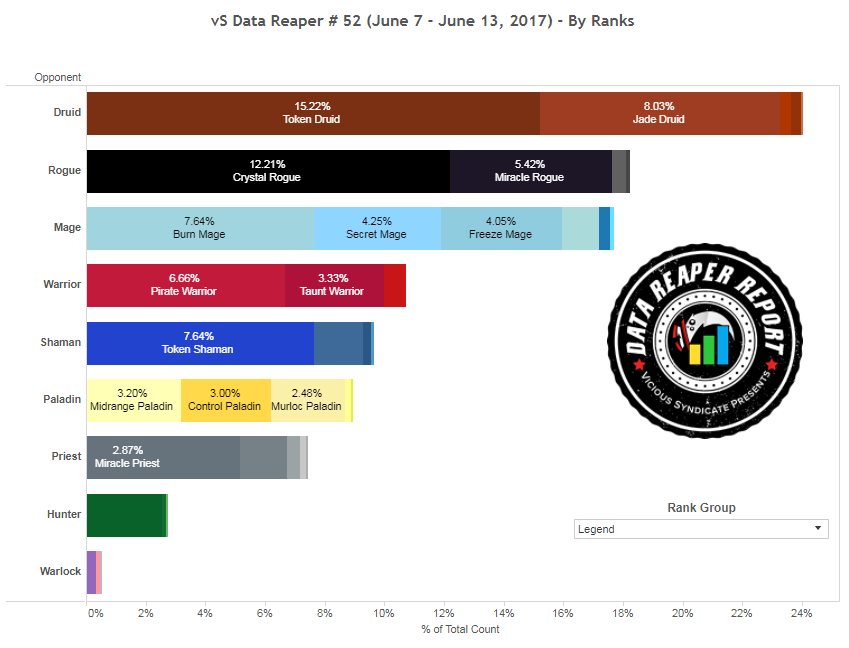
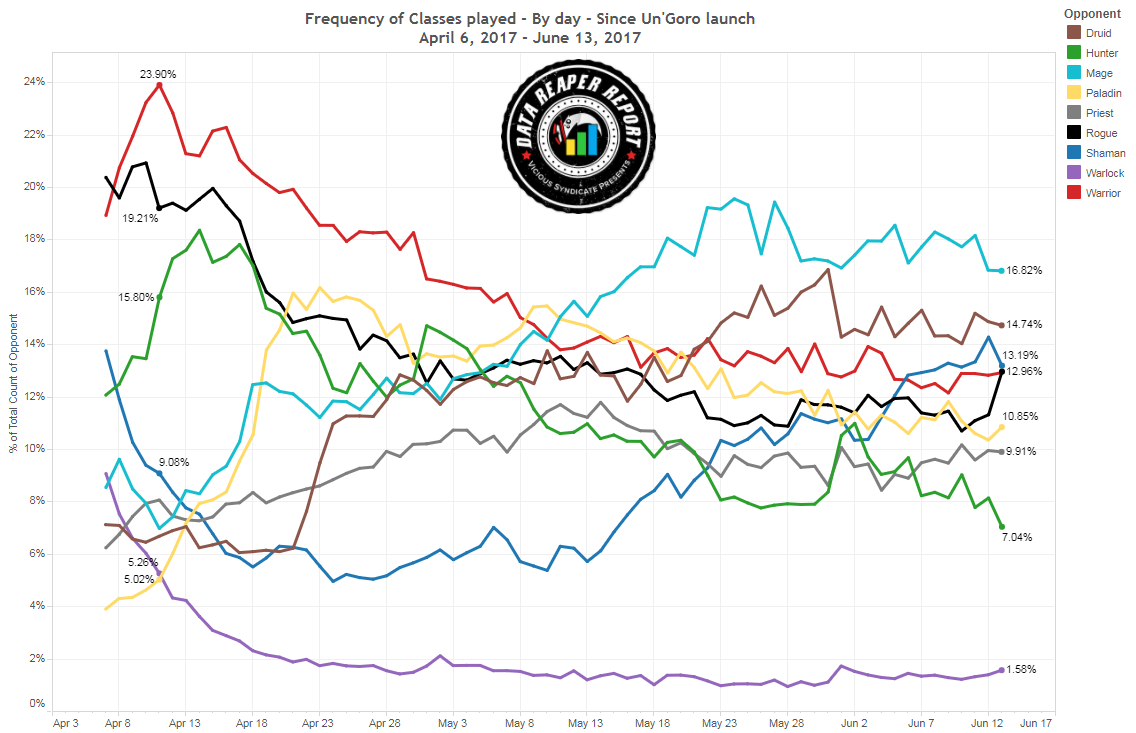
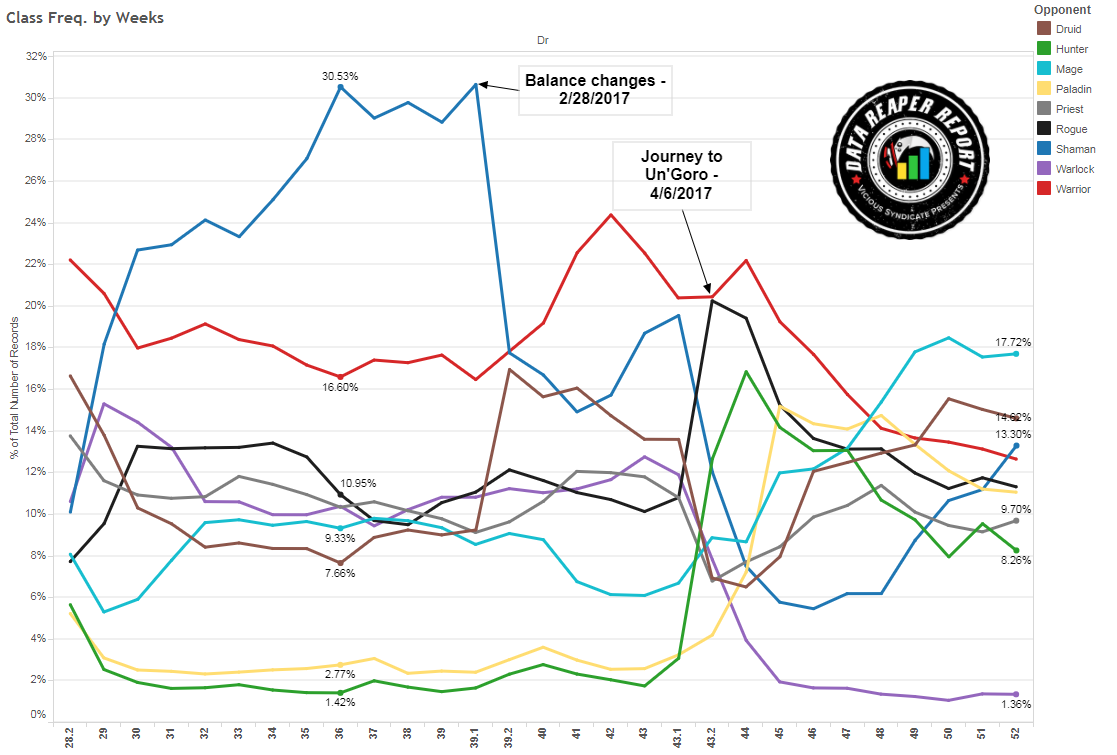

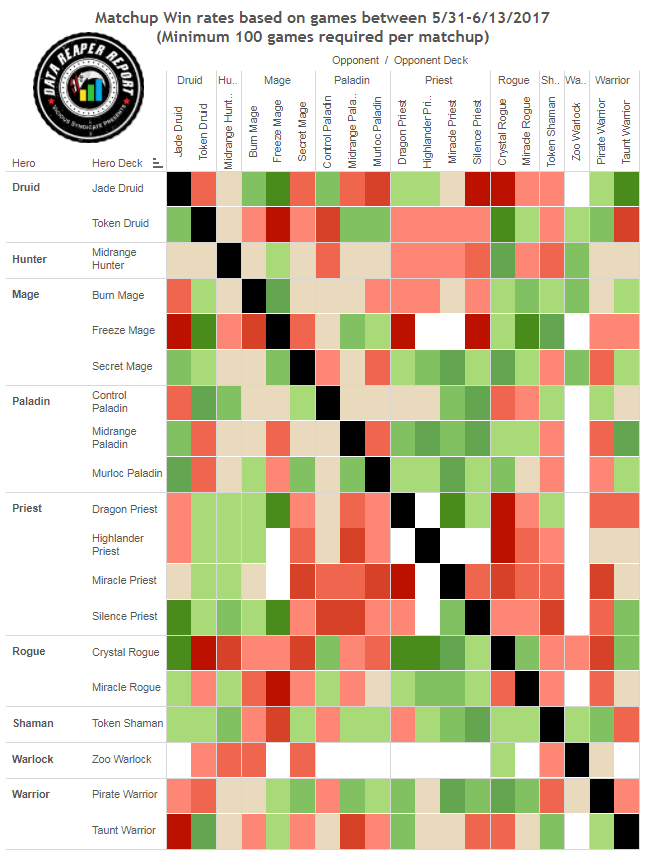

























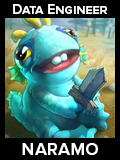

I just signed up to “contribute” my games. Finally. I use this report religiously and I think the more data, the better! When i see that there are less than 3,000 active contributors it makes me sad. The sample seems obviously skewed to players with better win-rates. In the data-reaper-live the mirror matchups for every archetype are above 50%.
I think that you would get exponentially more “contributions” and we would get better data too if you would make it easier to contribute. I dont mean to criticize, because it ended up being pretty easy once i found the instructions and actually read them.
Two suggestions (1) make an install file or make contribution one-step process with link at the top of every report (2) create a better looking “contribute your data” link.i must have glossed over it a thousand times and never clicked b/c it looks like a banner advertisement and not a way to contribute data.
Thanks as always for the report. You guys do it better than the rest. Most accurate meta-report and commentary is spot on every week.
What do you call those charts with cards represented by circles of varying sizes, connected by dots? How am I supposed to read those? Are the sizes of the circle to indicate how popular the card is in decklists? What about the lines? Is it the frequency of seeing each card in the same decklist? Thanks.
http://www.vicioussyndicate.com/vs-data-reapers-radar/
Data reaper made a murloc warlock deck… It runs 2 murloc raiders. Just wanted to point that out
it is actually a nightmare to get through the no skill hunter decks so you can actually play the decks which are fun…
thanks for the report as always!